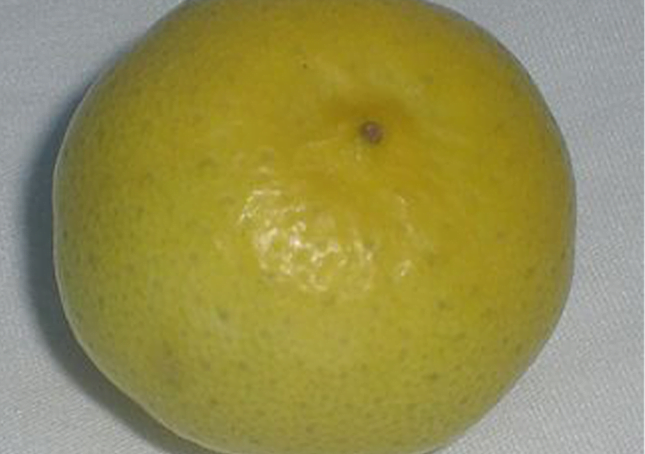Key lime

The Key lime (Citrus × aurantiifolia) is a citrus hybrid (C. hystrix x C. medica) native to tropical Southeast Asia. It has a spherical fruit, 25–50 mm (1–2 in) in diameter. The Key lime is usually picked while it is still green, but it becomes yellow when ripe.
The Key lime is smaller, seedier, has higher acidity, stronger aroma, and thinner rind than the Persian lime (Citrus × latifolia). It is valued for its characteristic flavor. The name comes from its association with the Florida Keys, where it is best known as the flavoring ingredient in Key lime pie. It is also known as West Indian lime, bartender’s lime, Omani lime, or Mexican lime, the last classified as a distinct race with a thicker skin and darker green colour. Philippine varieties have various names, including dayap and bilolo.
The English word lime was derived, via Spanish then French, from the Arabic word ليمة līma, which is, in turn, a derivation of the Persian word limu لیمو.[2] Key is from Florida Keys, where the fruit was naturalised. The earliest known use of the name is from 1905, where the fruit was described as “the finest on the market. It is aromatic, juicy, and highly superior to the lemon.”
C. aurantiifolia is a shrubby tree, to 5 m (16 ft), with many thorns. Dwarf varieties exist that can be grown indoors during winter months and in colder climates. Its trunk, which rarely grows straight, has many branches, and they often originate quite far down on the trunk.
The leaves are ovate, 25–90 mm (1–3 1⁄2 in) long, resembling orange leaves (the scientific name aurantiifolia refers to this resemblance to the leaves of the orange, Citrus aurantium). The flowers are 25 mm (1 in) in diameter, are yellowish white with a light purple tinge on the margins. Flowers and fruit appear throughout the year, but are most abundant from May to September in the Northern Hemisphere.[4][5]
Skin contact can sometimes cause phytophotodermatitis,[6][7] which makes the skin especially sensitive to ultraviolet light.
The Key lime cultivar is a citrus hybrid, Citrus micrantha × Citrus medica (a papeda-citron cross).
